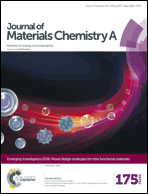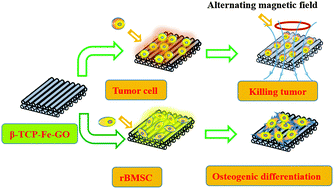Now in its 7th year, we are looking for nominations from you for the next Journal of Materials Chemistry Lectureship recipient.
We are pleased to announce that the 2016 lectureship is now open for nominations. This annual lectureship honours a younger scientist who has made a significant contribution to the field of materials chemistry.
Professor Chengtie Wu, Shanghai Institute of Ceramics, China, was chosen as the winner of the 2015 lectureship by the Journal of Materials Chemistry Executive Editorial Board, and will present his lecture at TERMIS-AP 2016 in Taipei, Taiwan from 3rd to 6th September
Qualification
To be eligible for the Journal of Materials Chemistry Lectureship, the candidate should be in the earlier stages of their scientific career, typically within 10 years of attaining their doctorate or equivalent degree, and will have made a significant contribution to the field.
Description
The recipient of the award will be asked to present a Journal of Materials Chemistry lecture, at a conference decided upon by the recipient and the Editorial Office. The Journal of Materials Chemistry Editorial Office will provide the sum of £1,000 to the recipient for travel and accommodation costs, and will present the winner with the award at this lecture. The award recipient will also be asked to contribute a lead article to the journal and will have their work showcased on the back cover of the issue in which their article is published.
Selection
The recipient of the lectureship will be selected and endorsed by the Journal of Materials Chemistry’s prestigious Executive Editorial Board.
Nominations
Those wishing to make a nomination should send details of the nominee including a brief C.V. (no longer than 2 pages) together with a letter supporting the nomination (no longer than 2 pages), to the Journal of Materials Chemistry Editorial Office by 1st June 2016. Please note that self-nomination is permitted, and you may re-nominate previous candidates.
Send a nomination here today: materials-rsc@rsc.org












 These 3D models show heterotopic ossification samples before (A) and after (B) treatment with hexametaphosphate
These 3D models show heterotopic ossification samples before (A) and after (B) treatment with hexametaphosphate





 Scientists are closer to producing outfits for the armed forces that change colour to match surroundings when soldiers move from a forest to a desert.
Scientists are closer to producing outfits for the armed forces that change colour to match surroundings when soldiers move from a forest to a desert.